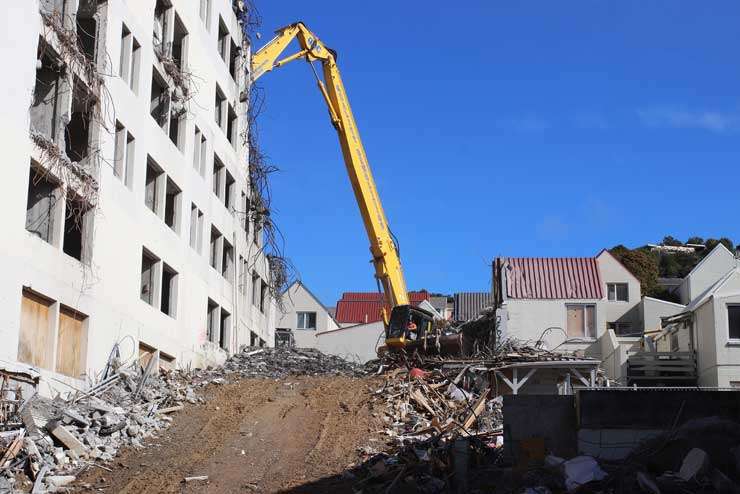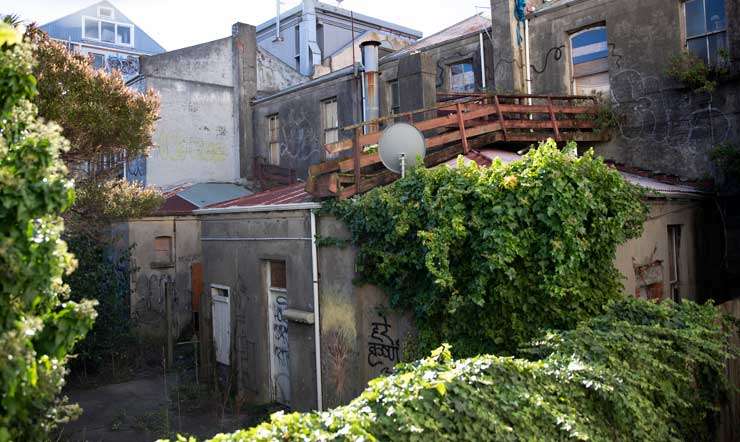Buyers are warned not skip on their due diligence when purchasing property in Wellington or other earthquake prone regions, with some affected homeowners still facing repair bills that run into the hundreds of thousands of dollars.
Wellington, in particular, has 600 earthquake prone buildings that have failed seismic assessment and need strengthening. More than half of those building owners have gone quiet and may miss deadlines for the work to be completed.
Wellington City Council has been on the case of the owners of earthquake-prone buildings since the 1970s. Successive decades have seen the number of at-risk buildings grow. In the wake of the Building Act 2004 and a new national system for managing earthquake-prone buildings in New Zealand in 2017, around 1,000 building owners in Wellington were issued with notices under the Building Act.
Under the 2017 rules following the 2016 Kaikōura earthquake, buildings that are less than 34% New Building Standard (NBS) are considered earthquake-prone. The percentage is the degree to which the building, or part of it, meets the seismic performance requirements of the Building Code.
Start your property search
Once the buildings are assessed, owners of those that fall short on the NBS standard then receive an earthquake-prone building notice with a deadline to strengthen or demolish, says Hayley Moselen resilience manager at Wellington City Council.
The owners are mostly given 15 years to carry out strengthening work to ensure their buildings are safe but not all are expected to meet their deadlines.
Moselen encourages buyers to do their due diligence and get a LIM before buying residential property in Wellington. The council maintains an earthquake-prone building register, covering buildings of two or more stories and three or more units.
Buildings listed on the council’s Earthquake Prone Register are considered likely to collapse and cause injury or death, or damage to another property, in a moderate earthquake.
A LIM, she says, may identify earthquake risks and other risks. “Find out if an [earthquake] assessment has been done on the building and whether it's been done by the council or been done by the building owner. This will give you more information about the seismic performance of the building so that you're stepping into one of the biggest decisions in your life with eyes wide open.
“Every now and then we have [heard of] a person undertaking a purchase and then they realise after the fact that the building is earthquake-prone. Maybe they didn't get a LIM. Maybe it was before [the current guidelines].”

Demolition of Wellington's earthquake-prone George Porter tower, in Mt Cook, in September 2020. Photo / Getty Images
No amount of research can prevent all risks. Moselen points out that guidelines can change.
If, for example, the threshold of 34% NBS was increased to a higher percentage in the future more building owners could find themselves faced with huge bills.
Under the Real Estate Agents Act 2008, agents must disclose known defects to potential buyers.
Good agents will spell out the building’s earthquake rating in their marketing.
Agent Alan Wilson, of Arizto Real Estate, says: “If we are selling an apartment, we quote what the NBS rating is.
“100% of the new building standard means the building won’t fall down and people can get out [in the event of an earthquake].” He points out, however, that the building might be “stuffed”.
Unless they’re brand new, few buildings will be 100% NBS, says Wilson. At the time of writing, he was selling an apartment in the Quest building with a 93 % rating, which is considered high.
“We generally don’t have a problem selling anything down to 40/45%,” he says. “The price reflects what you buy.”
Some buyers are willing to take a punt with property subject to defects. “It’s the same with leaky apartments, which are selling in the $200,000s,” says Wilson. “Buyers go in with eyes wide open.”

The rear of an earthquake-prone building on Ghuznee Street, in Wellington, in 2019. Buildings that are less than 34% New Building Standard (NBS) are considered at risk. Photo / Mark Mitchell
Wilson says buyers who are concerned with earthquake risks should consider buying homes in the hills that are build on solid rock. Flat land in Wellington is generally reclaimed land and could liquefy in an earthquake, he says.
Since 2006 the council has carried out 6,400 earthquake assessments, says Moselen. “Of those, 1,000 have been determined to be earthquake prone and been given formal notice. Approximately 500 of those buildings have already been either strengthened or demolished, or a new engineering assessment, obtained, she says.
Of the 600 remaining to be strengthened, 104 of those are predominantly residential, says Moselen. They could be apartment buildings or other types of building including commercial buildings that include residential living, or older large homes converted into flats.
For owners who struggle to finance strengthening work there is assistance available from both the council land government, says Moselen. That includes $250,000 in government-backed loans, the council’s Heritage Resilience and Regeneration Fund, discounts on building consents for strengthening work, two different types of rates rebates, and free advice from dedicated technical advisors.
Progress by building owners is a mixed bag, says Moselen. “There are some key challenges and that can include access to finance and insurance.” Apartment buildings in particular might have multiple owners who need to come to agreement in order to move forward. When the council surveyed owners of the 600 outstanding notices late last year, 240 didn’t reply.
If owners don’t repair their buildings, they could ultimately face a number of enforcement techniques.
In December the Wellington City Council won an appeal in the High Court to take possession of two heritage listed earthquake-prone buildings, strengthen them, and charge the costs back to the owners.
It can also erect hoardings or barriers outside an earthquake prone building to protect pedestrians or issue an order to ensure the building is not occupied.
Finally, tenants who may be concerned about living in an unstrengthened building should also check Wellington’s Earthquake prone register. “There is no requirement under the legislation for [earthquake-prone buildings] to be evacuated,” says Moselen .”That's really a decision for the building owner.”














































































